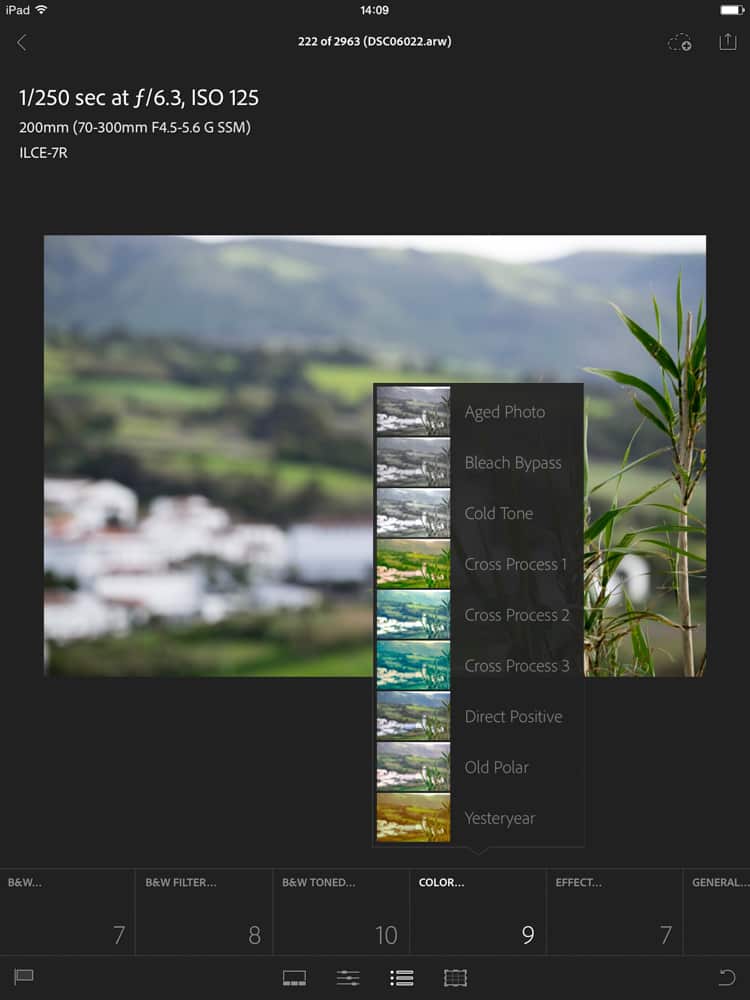Keeping Up with the Latest Camera Technology: What Every Photographer Should Know
In today’s rapidly evolving digital age, staying up-to-date with the latest camera technology is crucial for photographers of all levels. Whether you’re a professional shutterbug or an aspiring enthusiast, having a solid understanding of the advancements in camera technology will enable you to capture the perfect shot and elevate your photography game.
Gone are the days when cameras were simple devices solely used for capturing still images. With the advent of artificial intelligence, machine learning, and digital transformation, modern cameras have become more sophisticated than ever, offering an array of cutting-edge features that can enhance your creativity and achieve stunning results.
From mirrorless cameras and high-speed shooters to smart cameras powered by AI algorithms, the camera market is burgeoning with innovation. As a photographer, having a grasp of these advancements will not only keep you ahead of the curve but also allow you to harness the full potential of your gear.
In this comprehensive guide, we will delve into the exciting world of camera technology, explore the latest trends, and provide valuable insights to help you adapt and make the most of these advancements. So, grab your gear, put on your photographer’s hat, and let’s dive into the ever-evolving realm of camera technology!
Overview of Global Camera Market
The global camera market is a dynamic and rapidly evolving industry that caters to the needs and desires of both amateur and professional photographers around the world. With advancements in technology and the increasing demand for high-quality images and videos, the camera market has witnessed significant growth and innovation in recent years.
Camera Technology Market
One of the key driving factors behind the growth of the global camera market is the continual development and improvement of camera technology. From traditional film cameras to the modern digital cameras, the industry has witnessed remarkable advancements that have revolutionized how we capture and preserve our memories.
According to a report[1], the global camera technology market is estimated to reach a value of US$ 25.3 billion by 2032, with a compound annual growth rate (CAGR) of around 12%. This projection highlights the immense potential and opportunities that lie ahead for manufacturers and consumers alike.
Artificial Intelligence Camera Market
Another exciting trend within the camera market is the integration of artificial intelligence (AI) in cameras. AI-powered cameras are equipped with advanced features that enhance image quality and offer improved shooting experiences. These cameras can automatically detect and track subjects, adjust settings for optimal results, and even recognize scenes and objects for intelligent image processing.
The AI camera market has shown impressive growth, with a valuation of USD 7.52 billion in 2021[2]. This indicates a significant rise in demand for AI-powered cameras and showcases their growing popularity among photography enthusiasts and professionals.
Digital Cameras Market
Digital cameras have become a mainstream choice for capturing moments and creating stunning visuals. The convenience of instant image preview, ease of sharing and storage, and the ability to edit and manipulate images have made digital cameras an integral part of our lives.
The digital cameras market worldwide is projected to grow at a rate of 1.44% between 2024 and 2028, resulting in a market volume of US$ 25.5 billion in 2028[3]. This steady growth signifies the continued relevance and demand for digital cameras despite the rise of smartphone photography.
In conclusion, the global camera market is thriving and evolving, driven by advancements in technology, the integration of AI, and the enduring appeal of digital cameras. As the industry continues to innovate, photographers and enthusiasts can look forward to exciting new developments that will enhance their photography experience and push the boundaries of creativity.
Learn more about the evolution of camera technology in this comprehensive article.
[1] Source: Evolution of Camera Technology
[2] Source: Global AI Camera Market
[3] Source: Digital Cameras Market
Regional Camera Market Insights
The regional camera market is a dynamic and ever-evolving industry. Keeping up with the latest trends and market insights is crucial for both businesses and consumers. In this section, we will explore three specific regional camera markets: the India smart camera market, the global high-speed camera market, and the global digital transformation market. Each of these markets offers unique opportunities and challenges for industry players. Let’s dive in and explore the key insights for each market.
India Smart Camera Market
The India smart camera market is experiencing rapid growth, driven by advancements in technology and increasing consumer demand. According to industry reports[1], the market is projected to grow at a CAGR (Compound Annual Growth Rate) of 26.5%. This growth can be attributed to several factors, including:
- Rising disposable income and a growing middle-class population in India, leading to increased purchasing power.
- A shift towards smart and connected devices, driving the demand for smart cameras with features like wireless connectivity, mobile app integration, and voice control.
- Increasing adoption of smart security systems in residential and commercial spaces, contributing to the demand for smart surveillance cameras.
- The emergence of advanced technologies such as artificial intelligence (AI) and machine learning (ML), enhancing the capabilities of smart cameras in terms of image recognition, object tracking, and facial recognition.
With the integration of AI technology, smart cameras are revolutionizing the photography landscape by offering features like automatic scene recognition, real-time image enhancement, and intelligent image composition[2]. The advancement of smart technology in photography is transforming the way we capture and preserve memories. To learn more about the power of smart technology in photography, check out this informative article[3].
Global High-Speed Camera Market
The global high-speed camera market is poised for remarkable growth in the coming years. Market projections indicate that the market value will reach an impressive US$485.4 million by 2022[4]. Key factors contributing to this growth include:
- Increasing demand for high-speed cameras in industries such as automotive, aerospace, sports, and research, where capturing fast-moving objects is essential.
- Advancements in sensor technologies, enabling high-speed cameras to capture images at incredibly fast frame rates.
- Growing applications of high-speed cameras in slow-motion video production, scientific research, and industrial quality control.
With their ability to capture details that are not visible to the naked eye, high-speed cameras have become invaluable tools for various industries. Researchers, engineers, and filmmakers rely on these cameras to analyze motion, capture precise moments, and gain deeper insights into fast-paced phenomena.
Global Digital Transformation Market
The global digital transformation market is experiencing significant growth, fueled by the increasing adoption of digital technologies across industries. According to industry forecasts, the market is expected to grow at a CAGR of 21.1% during 2022-2027[5]. Key drivers for this growth include:
- The need for businesses to adapt to the digital age and stay competitive in a rapidly evolving global marketplace.
- Increasing investments in digital infrastructure and technologies by governments and organizations.
- The transformative power of AI, cloud computing, big data analytics, and the Internet of Things (IoT) in driving digital transformation initiatives.
As digital transformation becomes a strategic priority for businesses worldwide, the demand for cameras and imaging devices that enable digitalization will continue to rise. Cameras play a crucial role in capturing visual data and facilitating the integration of digital technologies into various industry workflows.
It is evident that the camera market is evolving rapidly, driven by technological advancements and changing consumer demands. Whether it’s the rise of smart cameras in India, the growth of high-speed cameras on a global scale, or the integration of cameras in digital transformation initiatives, the camera industry is at the forefront of innovation. To stay up to date with the latest developments and trends in camera technology, keep exploring our articles and resources in the photography section.
Camera Technology Trends To Watch
The world of camera technology is constantly evolving, with new innovations and advancements being made each year. Whether you’re a professional photographer or just a casual enthusiast, it’s essential to stay up-to-date with the latest trends so that you can capture your moments in the best possible way. Here are a few exciting camera technology trends to keep an eye on:
1. Mirrorless Cameras: The Future of Photography
Mirrorless cameras have been gaining popularity in recent years, and for good reason. Unlike traditional DSLR cameras, mirrorless cameras don’t use a complex system of mirrors and optical viewfinders. Instead, they rely on electronic viewfinders and sensors to capture images.
Why are mirrorless cameras the future of photography? Here are a few reasons:
- Smaller and Lighter: Mirrorless cameras are more compact and lightweight compared to DSLRs, making them highly portable and perfect for travel photography.
- Faster Autofocus: Mirrorless cameras use advanced autofocus technology, allowing for quicker and more accurate focusing, especially when it comes to tracking moving subjects.
- Silent Shooting: Mirrorless cameras have an advantage when it comes to silent shooting, which is ideal for situations where noise could be distracting or disruptive, such as weddings or wildlife photography.
If you’re interested in exploring the world of mirrorless cameras further, check out Future of Camera Technology for more insights and predictions for the future.
2. Computational Photography: The Power of Algorithms
In recent years, we’ve seen a rise in computational photography, where the power of algorithms is harnessed to enhance the quality of photographs. By leveraging artificial intelligence and machine learning, cameras can now capture and process images in ways we couldn’t imagine before.
Here are some exciting features that computational photography offers:
- Night Mode: With advanced algorithms, cameras can now capture stunning low-light photos without the need for additional lighting or long exposures.
- HDR Photography: High Dynamic Range (HDR) photography combines multiple exposures to create a single image with improved details and contrast.
- Portrait Mode: By using depth-sensing technology and intelligent algorithms, cameras can blur the background and make the subject stand out, creating professional-looking portraits.
Computational photography is transforming the way we capture and edit photos, blurring the lines between traditional photography and digital manipulation.
3. Video Capabilities: Beyond Still Images
While cameras have always been synonymous with photography, the lines between photography and videography are becoming increasingly blurred. Today’s cameras are equipped with advanced video capabilities, allowing users to capture stunning high-quality videos.
Here are some video features to look out for:
- 4K and Beyond: Cameras are now capable of shooting 4K videos, providing incredible detail and clarity. Some cameras even go beyond 4K, offering cinematic resolutions like 6K or 8K.
- Slow Motion: Many cameras now offer the ability to shoot slow-motion videos, capturing those moments that happen too quickly for the naked eye to catch.
- Stabilization: Built-in stabilization technology helps eliminate camera shake, resulting in smoother and more professional-looking videos.
Whether you’re a vlogger, content creator, or just want to explore the world of videography, cameras with advanced video capabilities are a game-changer.
As camera technology continues to advance, these trends are just the tip of the iceberg. From AI-powered cameras to advancements in sensor technology, the future of camera technology holds numerous possibilities. Stay tuned and keep an eye on the exciting developments in the world of photography!
“The future of camera technology is constantly evolving, and keeping abreast of the latest trends and innovations is crucial for photographers of all levels.”
Adapting to the Evolving Camera Technology
Introduction:
In today’s fast-paced world, technology is constantly evolving, and nowhere is this more evident than in the field of photography. With new advancements being made every day, it’s essential for photography enthusiasts to stay updated with the latest camera technology. Whether you’re a professional photographer or an enthusiastic hobbyist, understanding and adapting to these changes can help take your photography to new heights. In this article, we will explore some key reasons why it’s crucial to stay updated with the latest camera technology and how it can benefit your photography journey. Let’s dive in!
Why is it important to stay updated?
- Enhanced Image Quality: One of the most significant advantages of staying updated with the latest camera technology is the improved image quality it offers. The advancements in sensors, image processors, and lenses result in higher resolution, better dynamic range, and improved low-light performance, allowing you to capture stunning, more vivid photos with greater detail.
- Technological Features: Today’s cameras come equipped with a plethora of technological features that can significantly enhance your photography experience. From advanced autofocus systems and image stabilization to built-in Wi-Fi and GPS, these features not only make it easier to capture the perfect shot but also streamline your workflow by making it simpler to transfer and geotag your images.
- Expanded Creative Possibilities: As camera technology evolves, so do the creative possibilities available to photographers. Features like in-camera multiple exposure blending, focus stacking, and high-speed continuous shooting enable photographers to experiment and push their creative boundaries. By staying updated with the latest camera technology, you unlock a whole new world of possibilities to express your artistic vision.
Benefits for Beginners and Professionals
Both beginners and professionals can benefit from staying updated with the latest camera technology:
- Beginners: As a beginner, learning about and experimenting with the latest camera technology can provide a solid foundation for your photography skills. By understanding the capabilities and limitations of different camera models, you can make informed choices when investing in equipment. Additionally, staying updated allows you to take advantage of user-friendly features and intuitive controls, making it easier to delve into the world of photography.
- Professionals: For professionals in the photography industry, keeping up with the latest camera technology is not just a matter of staying relevant, but also about maintaining a competitive edge. By embracing newer technologies and techniques, professionals can offer clients unique and high-quality photography services. Moreover, being familiar with the latest advancements enables professionals to make educated decisions when upgrading their gear or exploring new genres of photography.
Conclusion
In the ever-evolving world of photography, staying updated with the latest camera technology is key to maximizing your creative potential. It allows you to capture images of superior quality, experiment with new features and techniques, and expand your artistic horizons. Whether you’re a beginner or a seasoned professional, embracing the advancements in camera technology can enhance your photography journey and help you create truly remarkable images. So, make sure to stay informed and explore the exciting possibilities that the latest camera technology has to offer!
Stay updated with the latest camera technology for phenomenal photography.
Conclusion
In conclusion, keeping up with the latest camera technology is crucial for every photographer. With advancements in camera technology, photographers have access to innovative features and capabilities that can enhance their creative abilities and improve the quality of their work.
By staying updated on the latest trends and developments in the camera industry, photographers can make informed decisions when it comes to investing in new equipment. This can help them stay competitive in a rapidly evolving market and deliver high-quality images that meet the expectations of their clients.
Whether it’s exploring the potential of artificial intelligence in cameras or embracing the digital transformation in photography, photographers need to adapt to the changing landscape of camera technology. By understanding the impact of these trends and incorporating them into their workflow, photographers can continue to push the boundaries of their craft and deliver exceptional results.
To stay informed about the latest camera technology updates, photographers can visit Wimarys.com, a website dedicated to photography and cameras, run by Wim Arys, an experienced photographer. Wimarys.com offers a wealth of resources, including tutorials, reviews, tips, and tricks, with a focus on Sony mirrorless cameras. Whether you’re a beginner photographer or an experienced professional, Wimarys.com can provide you with the inspiration and knowledge you need to elevate your photography projects.
Remember, in the ever-evolving world of photography, staying up to date with camera technology is essential to thrive and succeed. Embrace the advancements, explore new possibilities, and let your creativity soar. Start your journey towards mastering camera technology by visiting Wimarys.com today.
Frequently Asked Questions
- What are the latest camera technologies that photographers should know about?
Some of the latest camera technologies that photographers should know about include mirrorless cameras, high-resolution sensors, in-body image stabilization, advanced autofocus systems, and 4K video capabilities.
- Are mirrorless cameras better than DSLRs for photographers?
Mirrorless cameras and DSLRs both have their own advantages and disadvantages. Mirrorless cameras are generally more compact, have faster burst shooting, and offer better video capabilities. DSLRs, on the other hand, often have better autofocus performance and a wider range of lens options.
- What is in-body image stabilization and why is it important for photographers?
In-body image stabilization is a technology that compensates for camera shake by moving the image sensor. This feature is important for photographers as it allows them to capture sharp images in low-light conditions or when using longer focal lengths without the need for a tripod.
- How does advanced autofocus system benefit photographers?
An advanced autofocus system allows photographers to track and capture fast-moving subjects with greater accuracy and speed. It ensures that the subject remains in focus even in challenging shooting conditions, such as in low light or during sports photography.
- What are the advantages of having 4K video capabilities in a camera for photographers?
Having 4K video capabilities in a camera allows photographers to capture high-quality video footage with superior detail and clarity. It also provides flexibility in post-production, as photographers can extract high-resolution still images from the video footage.



